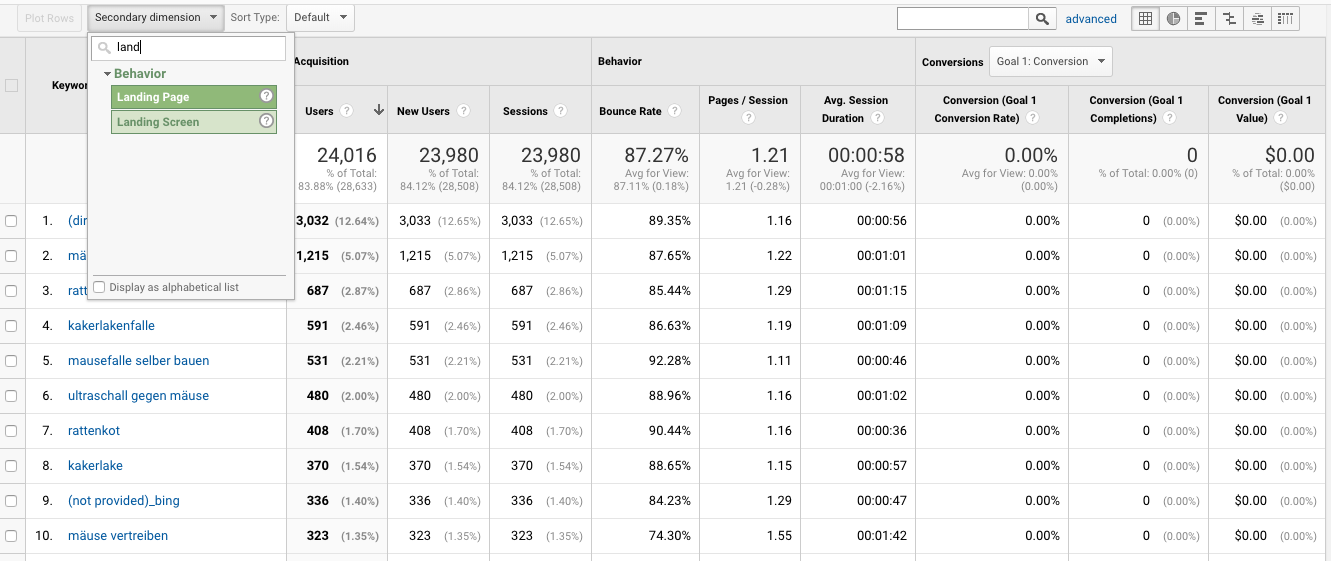Grasping Google Analytics: Using Secondary Dimension for Deeper Analysis
Wiki Article
Unlocking the Power of Additional Measurement Analytics for Enhanced Data Insights and Decision-Making
In the realm of information analytics, main dimensions usually take the limelight, yet the true deepness of understandings lies within the realm of secondary dimensions. By taking advantage of the power of secondary dimension analytics, companies can unveil surprise patterns, uncover connections, and remove extra meaningful verdicts from their data.
Importance of Second Measurements
Checking out the value of additional measurements in analytics unveils the covert layers of information understandings vital for notified decision-making in various domain names. Additional dimensions supply a much deeper understanding of primary data by supplying extra context and perspectives. By including secondary dimensions right into analytics, organizations can remove extra nuanced and thorough insights from their datasets.One trick significance of second measurements is their capacity to sector and categorize key data, enabling for an extra detailed analysis of details parts within a dataset. This division enables organizations to determine patterns, patterns, and outliers that could not appear when considering the data as a whole. Secondary dimensions aid in discovering relationships and dependencies between various variables, leading to more exact projecting and predictive modeling - secondary dimension.
Moreover, additional measurements play a vital role in enhancing information visualization and reporting. By adding additional measurements to visualizations, such as charts or charts, experts can develop much more useful and insightful depictions of information, promoting much better interaction of searchings for to stakeholders. On the whole, the integration of secondary measurements in analytics contributes in opening the full capacity of data and driving evidence-based decision-making.
Trick Advantages of Using Additional Dimensions
Using additional measurements in analytics supplies companies a calculated advantage by augmenting the depth and granularity of information insights. One essential benefit of incorporating additional measurements is the ability to sector and filter information, enabling a much more in-depth evaluation of particular facets within a dataset. This segmentation allows companies to obtain an extra nuanced understanding of their target market, performance metrics, and other critical data points. By exploring information making use of second measurements such as time, location, tool type, or customer demographics, companies can uncover patterns, trends, and correlations that might otherwise continue to be surprise.Furthermore, the use of secondary measurements boosts the context in which primary data is analyzed. By leveraging second dimensions in analytics, organizations can harness the full capacity of their data to drive better decision-making and achieve their service purposes.
Advanced Information Evaluation Techniques
A deep dive into sophisticated data analysis methods reveals advanced techniques for drawing out important insights from complicated datasets. One such strategy is artificial intelligence, where formulas are utilized to recognize patterns within information, anticipate outcomes, and make data-driven choices. This technique enables the automation of analytical design building, enabling the processing of large volumes of data at a quicker speed than typical approaches.An additional sophisticated technique is anticipating analytics, which utilizes analytical formulas and artificial intelligence techniques to anticipate future results based upon historic information. By examining patterns and trends, companies can anticipate consumer behavior, market trends, and prospective dangers, equipping them to make aggressive decisions.
Moreover, text mining and sentiment evaluation are beneficial methods for drawing out understandings from unstructured information resources such as social networks remarks, customer testimonials, and study responses. By examining message information, organizations can recognize client viewpoints, recognize emerging patterns, and boost their services or products based on comments.
Enhancing Decision-Making With Secondary Measurements

Enhancing decision-making with secondary measurements makes it possible for services to make more educated and targeted calculated options. As an example, by segmenting client data based upon why not find out more secondary dimensions like buying history or engagement levels, companies can customize their advertising and marketing techniques to certain target market sections, bring about boosted conversion prices and customer satisfaction. Additional dimensions can assist determine relationships and relationships in between different variables, enabling organizations to make data-driven decisions that drive development and success.
Executing Additional Dimension Analytics
When including additional dimensions in analytics, companies can unlock deeper understandings that drive critical decision-making and enhance overall efficiency. This entails recognizing the certain inquiries the organization looks for to answer and the data points required to resolve them.
Furthermore, organizations need to leverage progressed analytics tools and modern technologies to improve the procedure of integrating additional dimensions. These tools can automate information processing, evaluation, and visualization, enabling companies to focus on analyzing understandings as opposed to hands-on data manipulation.
Verdict
In verdict, second measurement analytics play a critical duty in boosting data insights and decision-making processes. By using advanced data analysis strategies and executing additional measurements successfully, companies can unlock the power of their information to drive critical company choices. The vital benefits of using secondary measurements can not be overemphasized, as they provide a deeper understanding of data trends and connections. It is crucial for organizations to leverage secondary dimension analytics to stay competitive in today's data-driven landscape.In the realm of data analytics, main measurements frequently take the spotlight, however the real deepness of insights exists within the world of additional dimensions.Making use of additional measurements in analytics provides organizations a tactical advantage by enhancing the deepness and granularity of data understandings. By leveraging additional measurements in analytics, organizations can harness the full possibility of their data to drive far better decision-making and achieve their business objectives.
Carrying out information validation processes and regular audits can aid maintain information quality and dependability.
By using innovative information evaluation methods and carrying out additional measurements properly, organizations can unlock the power of their data to drive calculated service choices.
Report this wiki page